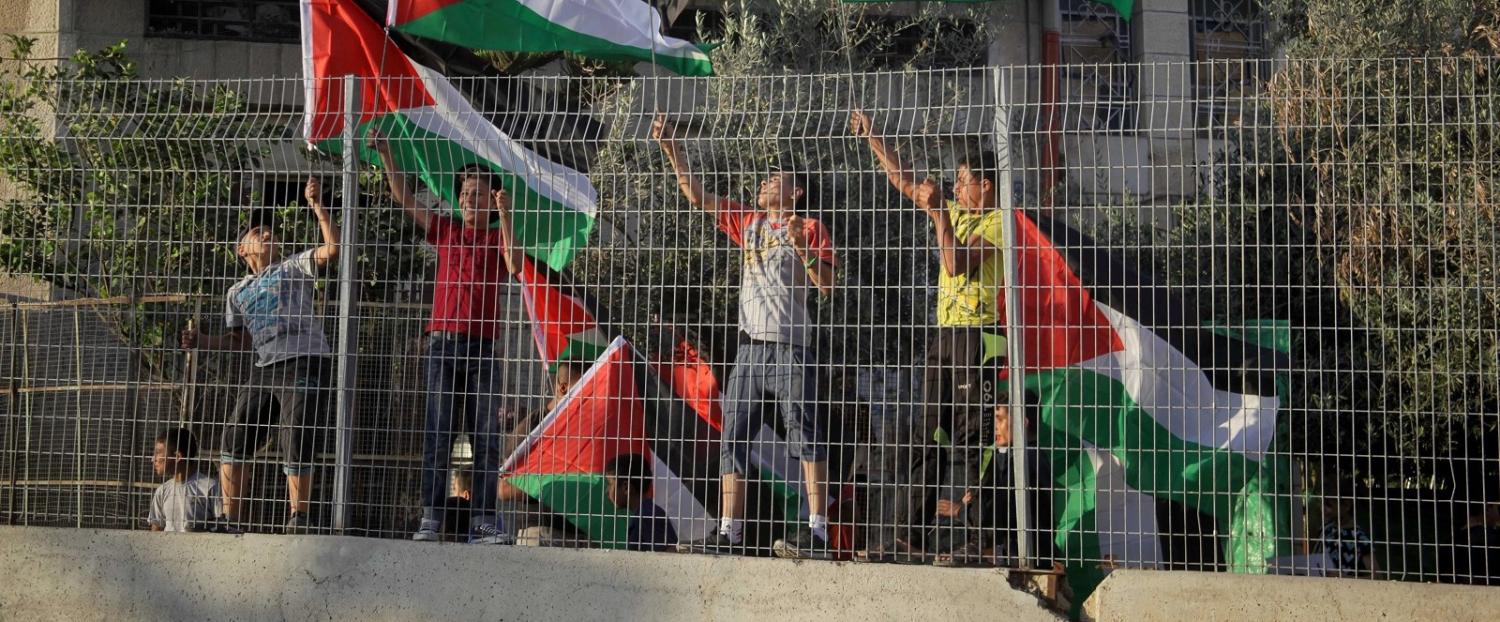Earlier this year, the Trump administration sparked new hope in Ramallah with efforts to kickstart moribund peace negotiations but, despite several meetings between Palestinian and American officials, there is still no clear outline for negotiations. Also absent is the increase in aid to the Palestinian Authority (PA) that has traditionally accompanied revived peace expectations. In fact, the level of development and budgetary support provided to the PA is expected to fall this year.
International aid has played a crucial role in sustaining the humanitarian situation in the West Bank and Gaza, the Palestinian economy, and the PA’s operations since 1993. According to the World Bank, more than US$31 billion in international aid has flowed to Palestinians since 1993. Each and every infrastructure project or government institution in the West Bank or Gaza has significant international financial backing. But since 2013, aid disbursements in the form of development and direct budgetary support have fallen sharply. As illustrated in Figure 1, aid has declined from about $2.8 billion in 2008 to about $1.7 billion in 2016. Aid as a percentage of GDP is at its lowest level since the PA’s inception - now just 13%.
Figure 2 shows donors are particularly reluctant to finance the PA’s recurrent expenditures, with this category of funding down 75% in recent years.
There are many reasons why the level of aid has declined. Firstly, many donor countries have cut their global development and humanitarian assistance budgets in recent years. Secondly, regional developments may have diverted aid disbursements from Palestine to other destinations with greater humanitarian needs such as Iraq, Syria and Yemen. Finally, donor fatigue related to both the gridlocked peace process and the PA’s deteriorating democracy and human rights records should not be underestimated. These factors are also also affecting opinion at home. The last time elections were held in Palestine was in 2006 and the State of Palestine's President Mahmoud Abbas is in his 12th year of what was initially supposed to be a four-year term. Data published by the Palestinian Center for Policy and Survey Research shows two thirds of Palestinians would like Abbas to resign, while 50% view the PA as a burden on Palestinians and 47% support its dissolution.
It's also reasonable to question the effectiveness of the aid given to date.
Given that it is generally accepted that one of the main objectives of aid is to encourage socioeconomic development, the data on Palestine's economy makes for sober reading. Major indicators do not demonstrate any linear relationship between sustainable economic performance and the billions of dollars in aid received. Growth rates have been volatile and unemployment is consistently estimated at 25%. Palestine is one of the worst places in the world to work, public and private debts have reached unprecedented levels, 25% of Palestinians live in poverty, 80% of Gaza’s population is aid dependent, and 50% of Palestinians are food insecure. The only economic growth achieved has been in the West Bank and this has largely been jobless growth coming off a low base, driven by private consumption and fueled by bank borrowing and one-off public expenditure projects.
On the social level, aid continues to serve an important humanitarian purpose across the West Bank and Gaza. Even though nearly a quarter of Palestinians remain poor, aid has been successful at alleviating some of the impacts of that poverty, at least in the short-term, by providing regular food assistance, cash for work programs, and water supplies. The education and health sectors have also benefited from international aid. The literacy rate in Palestine has improved significantly since 1994 and it's now at 97%. In addition, the PA and other donors play a central role in providing health insurance and constructing healthcare centers. However, the sustainability of these sectors is questionable as aid creates dependency at both provider and consumer levels.
Of course the limitations under which the PA and Palestinian economy operate also impede the effectiveness of aid. Without control of natural resources, borders, and 60% of the West Bank (Area C), the Palestinian economy and the PA lack the foundational assets required for effective and sustainable growth, even with substantial aid disbursements. Then there is the division of the West Bank and Gaza into two distinct geographical zones with different economic characteristics that hamper development. The West Bank is also further fragmented into separated population hubs connected by an Israeli-controlled road network that services hundreds of Israeli settlements and military bases while impacting the most basic of economic activities.
Despite declining disbursements, aid will continue to play an important role in sustaining the Palestinian economy and the PA. Similarly, humanitarian assistance will continue to provide much-needed, short-term relief, particularly for marginalised Palestinians mainly in Gaza, and Area C in the West Bank. However, sustainable aid-enabled development will largely rely on Palestinians being able to access their natural resources, control their borders, and Area C. It will also rely on the PA’s commitment towards democracy and efficient governance and, at some point, bolstering Palestinians' hope for a political settlement.

